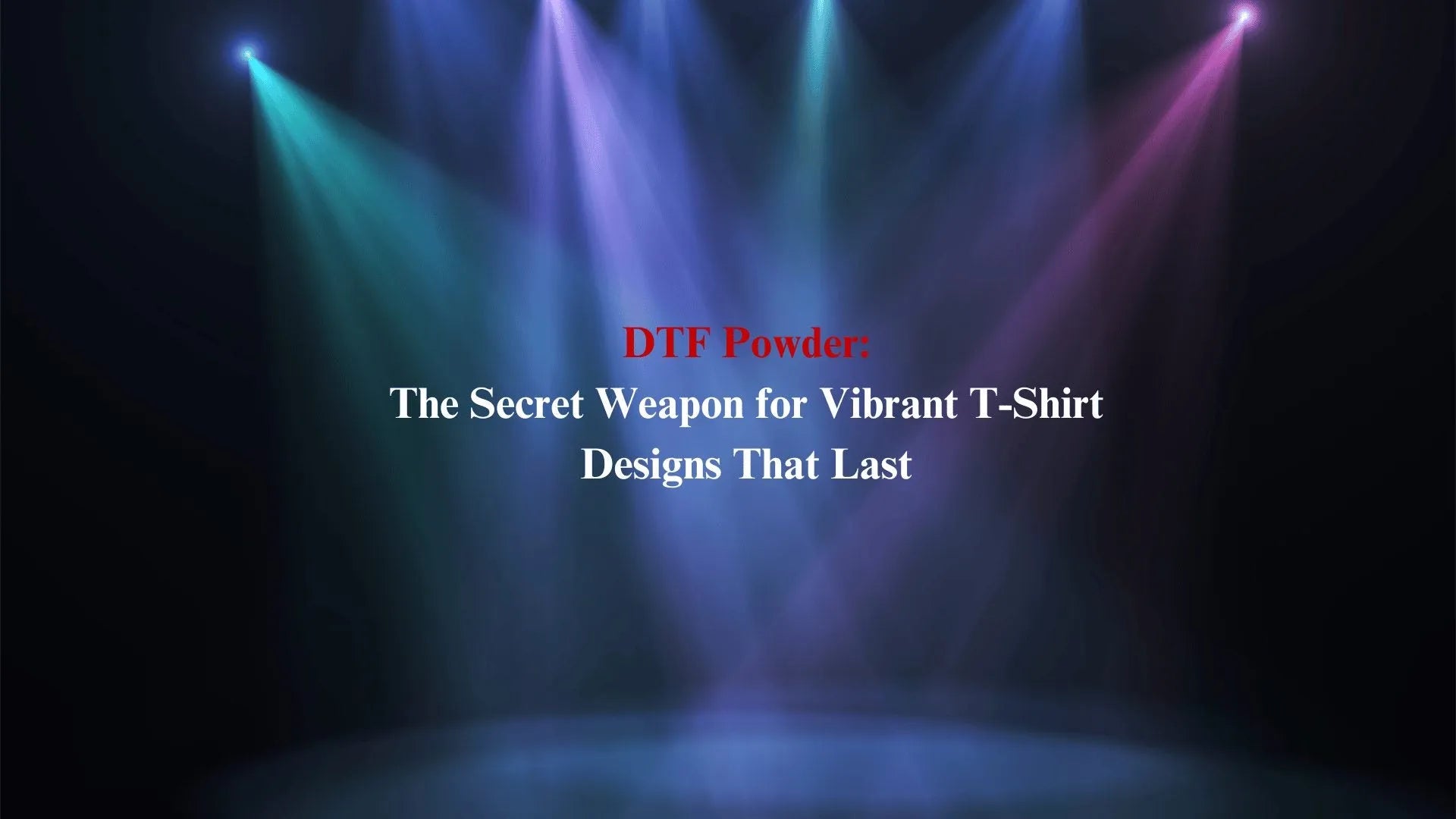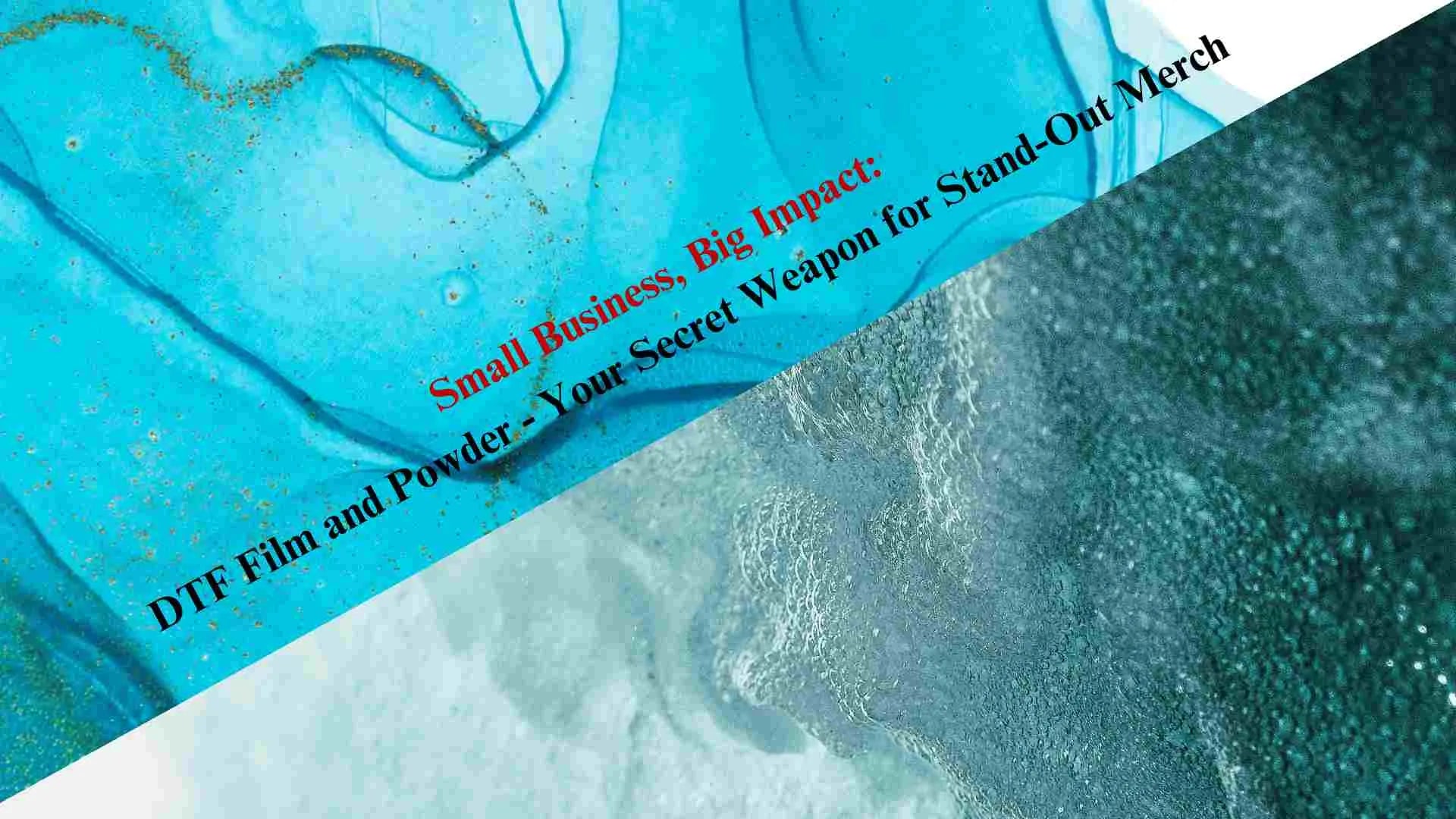
DTF Powder: The Secret Weapon for Vibrant T-Shirt Designs That Last

DTF Powder: The Secret Weapon for Vibrant T-Shirt Designs That Last
In the world of custom t-shirt printing, quality is everything. Whether you're creating designs for a business, event, or personal use, the durability and vibrancy of your prints can make all the difference. Enter DTF Powder—the unsung hero of Direct-to-Film (DTF) printing. This essential component ensures your prints are not only colorful and detailed but also long-lasting. In this blog, we’ll dive into the importance of Direct-to-Film powder, how it works, and why it’s the secret weapon you need for high-quality t-shirt designs.
What is DTF Powder?
DTF Powder, also known as adhesive powder, is a crucial ingredient in the Direct-to-Film (DTF) printing process. After a design is printed onto a special film, Direct-to-Film powder is applied to the printed areas. This powder helps the ink adhere to the fabric during the heat transfer process. Without it, the ink would not properly bond to the fabric, and the print would fade or peel over time. Direct-to-Film powder ensures that your designs remain vibrant, sharp, and durable.
Why is Direct-to-Film Powder Important for T-Shirt Printing?
1. Strong Adhesion for Long-Lasting Prints
The main job of Direct-to-Film powder is to create a strong bond between the printed ink and the fabric. When you apply the powder, it forms a durable adhesive layer that keeps the design intact, even after multiple washes. This is especially important for custom t-shirts that are worn often. Without Direct-to-Film powder, prints may fade, crack, or peel off after just a few washes.
2. Vibrant and Crisp Designs
Direct-to-Film powder enhances the quality of your prints by ensuring that the ink stays sharp and vibrant. Whether you’re printing intricate patterns or bold, simple logos, Direct-to-Film powder ensures that the design looks just as vibrant on the t-shirt as it does on your screen. It helps bring out the colors in your design, giving your t-shirts a fresh, high-quality appearance.
3. Works on Multiple Fabric Types
One of the best features of DTF powder is its versatility. It works on various fabric types, including cotton, polyester, blends, and even non-fabric materials like leather. This means you can use Direct-to-Film powder to create custom designs on a wide range of apparel, from t-shirts and hoodies to bags and hats.
4. Cost-Effective and Efficient
While other printing methods may require expensive equipment and materials, Direct-to-Film powder offers a cost-effective solution for high-quality prints. It reduces waste and helps you make the most out of your materials. DTF printing is efficient, meaning businesses can save time and money while still producing premium-quality t-shirts.
How Does Direct-to-Film Powder Work?
The Direct-to-Film powder is applied in a few simple steps as part of the DTF printing process:
-
Design Creation: The design is first created on a computer and printed onto a special film using a DTF printer.
-
Powder Application: After printing the design, Direct-to-Film powder is sprinkled onto the printed ink while it’s still wet. This powder needs to be applied evenly to ensure full coverage.
-
Curing: Once the powder is applied, the film with the design is heated to cure the powder. This step ensures the adhesive powder bonds with the ink, creating a strong layer.
-
Heat Transfer: The prepared film is then placed onto the fabric, and heat is applied to transfer the design. The heat causes the ink to bond securely to the fabric, while the Direct-to-Film powder ensures that the print stays intact.
-
Final Result: The result is a crisp, vibrant, and durable print that’s ready to be worn or sold.
The Benefits of Using Direct-to-Film Powder for Custom T-Shirts
- Long-Lasting Prints: Direct-to-Film powder creates prints that won’t fade or peel over time, even with regular washing.
- Vibrant Colors: It helps maintain the brightness and vibrancy of your designs, making them pop on fabric.
- Versatility: Works on a wide range of fabrics, so you can print custom designs on various types of apparel and accessories.
- Cost-Effective: Direct-to-Film powder offers an affordable solution to high-quality prints, saving you money compared to other printing methods.
- Efficiency: Direct-to-Film powder helps streamline the printing process, reducing waste and improving production times.
Tips for Using Direct-to-Film Powder Effectively
- Apply Evenly: Make sure to apply the powder evenly over the printed design. Uneven powder application can affect the final result.
- Store Properly: Store Direct-to-Film powder in a dry, cool place to maintain its effectiveness. Humidity and heat can affect its performance.
- Test on Different Fabrics: Different fabric types may react differently to the powder. It’s a good idea to test on sample fabrics before printing your final designs.
Conclusion
Direct-to-Film powder is the secret weapon every custom t-shirt maker needs. Its ability to create vibrant, long-lasting, and durable designs makes it an essential tool in the Direct-to-Film printing process. Whether you’re printing for a small project or creating custom apparel for a business, Direct-to-Film powder ensures that your designs will stand out and stay looking great over time.
Check Out Our Other Products
More information


Leave a comment
This site is protected by hCaptcha and the hCaptcha Privacy Policy and Terms of Service apply.